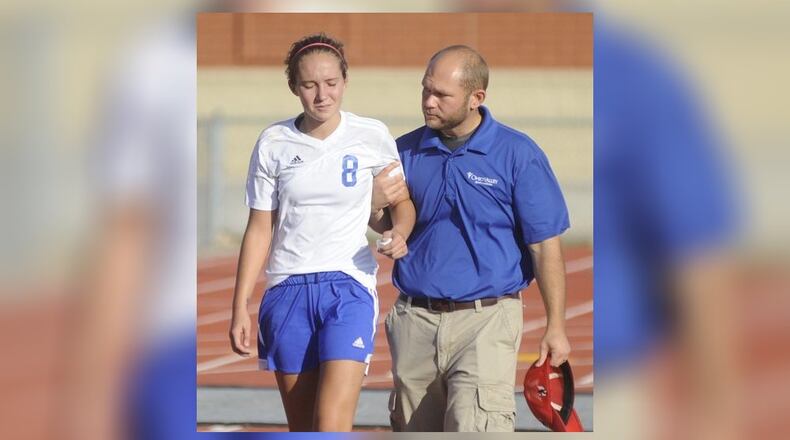“It’s important for a school to have an emergency action plan so that when an event comes up they can handle it and handle it well,” said Dr. Barrow, who practices with Premier Physician Network and serves as team physician for Northmont High School and the University of Dayton. “You can put steps down on paper and hope that they will work, but until you actually walk through it, you won’t know if there are potential barriers that will need to be addressed.”
Schools should regularly walk through their emergency action plan to ensure its efficacy. Walk-throughs usually take place once a year and can point out areas for improvement as well as refresh staff on how things need to be carried out. Effective emergency action plans establish these key details:
Who's in charge: It's important to know who will call the medic when they are needed and who is going to run and retrieve vital medical equipment such as an AED when it is needed on the field or court. These individuals should be aware of their responsibility and the rest of the team should know who they can turn to when quick action is needed.
What's available for use:Athletic staff should know where important equipment is located and how it can be accessed in case of an emergency. Tools such as an AED should be located in an easy to reach area rather than locked inside a school clinic. Equipment like an AED should also be regularly checked to make sure it is charged and that its components aren't expired or worn out.
“Schools should really have an AED on campus because it is really a life-saving piece of equipment,” Dr. Barrow said. “We all know that time-to-electricity – that is the time that someone exhibits symptoms to when we can deliver a shock – can determine their outcome.”
When a plan should be activated: A school's athletic staff – including coaches and assistants working with students – should have basic training on how to recognize emergency situations and to determine if an emergency action plan should be activated. Area coaches clinics help train athletic staff on the basics including CPR and identification of important symptoms.
“We don’t expect them to be doctors, but we do expect them to learn the signs and symptoms of various emergencies such as concussions, heat stroke or major hemorrhage,” Dr. Barrow said.
Where access can be gained: Establish early on who holds the keys to important gates and facility doors. Athletic staff should be trained on all possible points of entry into a facility. This ensures that when medical personnel arrive they can be quickly directed to the injured player.
Parents can play a vital role in making sure emergency action plans are in place and that their child’s school is evaluating them on a regular basis. Dr. Barrow encourages parents to attend team meetings at the beginning of a sports season and to have the confidence to inquire about how athletic programs implement action plans.
Premier Physician Network is one of the largest groups of pediatrics, family medicine, internal medicine, and urgent care practices in southwest Ohio. For more information, go online to www.premierphysiciannet.com.
For information on emergency action plans or to find a Premier Physician Network physician near you, visit www.PremierPhysicianNet.com. Premier Physician Network is a part of Premier Health. Premier Health is the official sports medicine provider for 42 area schools, including the University of Dayton and Wright State University. Premier Health’s team of board-certified sports medicine and orthopedic physicians, athletic trainers and rehabilitation specialists offers a comprehensive program focused on the goals of each patient.
About the Author
